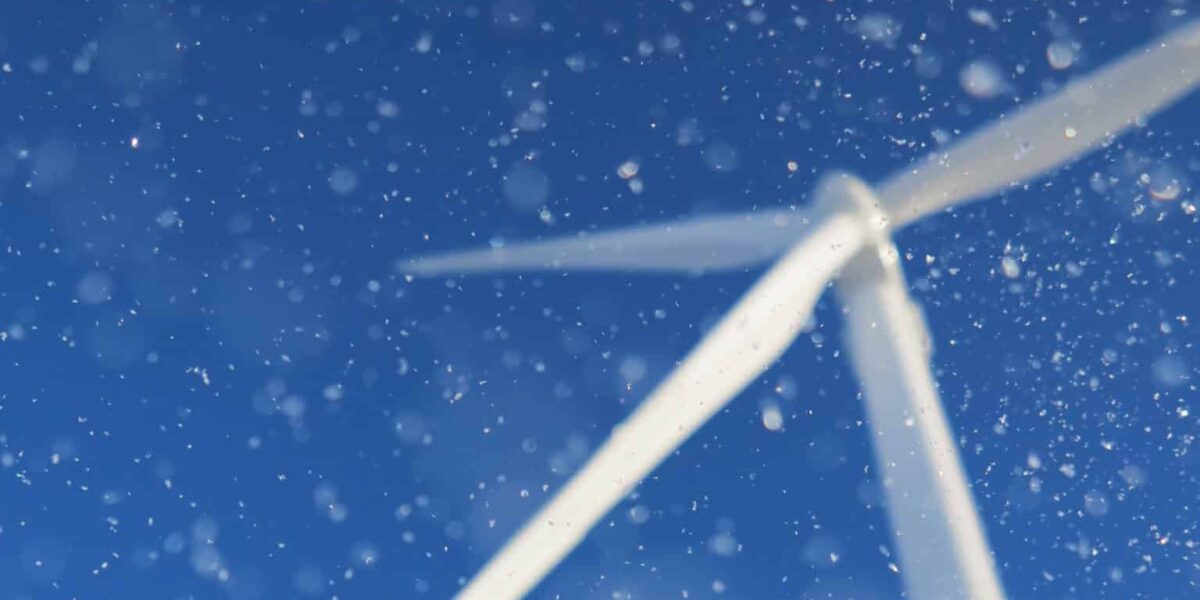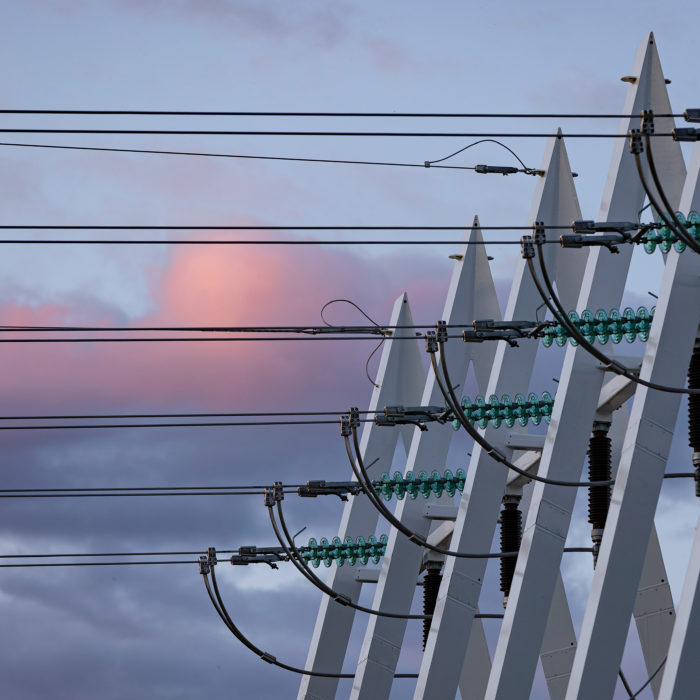Finland has approximately 1,400 wind turbines with a combined output of just under 5,700 megawatts.
Fingrid expects this capacity to quadruple over the next decade. Wind power will then account for as much as 90 per cent of Finland´s energy production at times.
Anni Mikkonen, CEO of the Finnish Wind Power Association, points out the other significance of wind power:
“Our wind power market is among the most exciting in Europe at the moment. Wind power is the industry that attracts the largest investments to Finland every year. No other form of electricity production can be built in Finland as quickly and cost-effectively as wind power.”
Mikkonen points out that wind power also boosts the vitality of many small communities.

From synchronous machines to frequency converters
As wind power accounts for an increasingly large share of energy production, new solutions are required to ensure the functionality of the power system. The method for connecting wind power to the grid differs in a technical sense from the method for conventional power plants.
In hydro and thermal power plants, a turbine rotates a generator at the same pace as the grid frequency. If the frequency or voltage of the grid changes, a synchronous machine naturally resists such changes.
Wind turbines, however, are connected to the grid via frequency converters.
At traditional power plants, the connection is a physical one. At wind power plants, it is a question of programming.
“At traditional power plants, the connection is a physical one. However, at wind power plants, it is a question of programming based on power electronics,” says Antti Harjula, Head of Power System Engineering Unit at Fingrid.
Power converters follow the grid
The wind power construction boom is displacing the synchronous machines at conventional power plants from the electricity network. However, power converters only follow the grid – as they are programmed to react – and do not stabilise the network as synchronous machines do.
“Power converters lock into the grid frequency and supply power accordingly,” Harjula explains.
“The challenges include the interactions between power converters. Production based on power electronics also required more accurate modelling and analysis to ensure the stable operation of the power system.”
As power converters do not support the power system like synchronous machines do, power system stability may be degraded. As a result, also transmission system protection and the quality of electricity may suffer. In addition, the power system will become more difficult to manage.
Solutions from the market, wind turbines and the grid
Harjula lists three categories of solutions for boosting grid stability: solutions purchased from the market, implemented into wind power plants, and built into the grid.
Solutions can be implemented locally, regionally or even at the pan-Nordic level.
Transmission system operators around the world research opportunities together with customers and equipment manufacturers.
In the future, Fingrid may buy production from power plants to support the grid rather than to produce energy.
In the future, Fingrid may buy production from power plants to support the grid rather than to produce energy. An example of market-based solution is the Fast Frequency Reserve (FFR), which is activated in low-inertia situations.
Fingrid will set new requirements for production facilities connecting to the grid in due course. For example, power converters should be capable of creating voltage and maintaining the frequency without an external reference.
Commercial solutions are already available for grid energy storage facilities based on power converters that are grid forming. However, solutions integrated into power plants are still in the development stage, and standards are lacking.
The third category covers devices integrated into the power system. Fingrid can for example install synchronous machines in the grid that work without an energy source.
“Fingrid is responsible for ensuring the overall functionality of the power system in Finland. In time, we will find the most cost-efficient solutions,” Harjula says.
In any case, solutions must provide predictability and technical reliability.
Strengthening the main grid on the west coast
Our wind power production has strong regional concentrations.
As much as three-quarters of wind power production, at present and in the near future, is in the regions of Ostrobothnia. This part of Finland will host a wind power cluster to rival the output of the Olkiluoto and Loviisa nuclear power plants.
“By the end of 2025, the area between Pori and Oulu will contain about 5,000 megawatts of wind power production. In addition, thousands more megawatts of production are planned on land and at sea,” says Petri Parviainen, Customer Manager at Fingrid.
More transmission line connections are needed on the west coast.
Although Fingrid has renewed and strengthened the main grid on the west coast, the transmission capacity is already being pushed to its limits due to the growth in onshore wind power, especially during maintenance and faults. So more transmission line connections are needed in the area.
Fingrid is preparing and conducting environmental impact assessments on a new 400-kilovolt transmission line connection from Kristinestad to Tampere and two similar transmission line connections from Kalajoki to Central Finland. The connections will be completed in 2027 and 2028.
“The new transmission lines will significantly increase the electricity transmission capacity in the region and facilitate the connection of new wind power production to the power system. However, the timetable for building these connections could slow the execution of some wind power projects,” Parviainen mentions.
Synchronous compensator to be installed in Kalajoki
Increasing the transmission capacity of the main grid is an important project, but the west coast also needs solutions that can be implemented more quickly.
Fingrid ordered a synchronous compensator – a large synchronous machine – for installation at the Jylkkä substation in Kalajoki. The synchronous compensator will balance the grid without an energy source.
“According to the plans, we will commission the synchronous compensator in 2025. This will make it possible to connect some new wind power to the grid along the Kokkola–Raahe axis,” says Parviainen.
Fingrid also intends to deploy Dynamic Line Rating technology on the west coast to provide more accurate data on the possibilities for loads and capacity in the transmission grid in different weather conditions. The technology will provide room for manoeuvre in grid operations.




